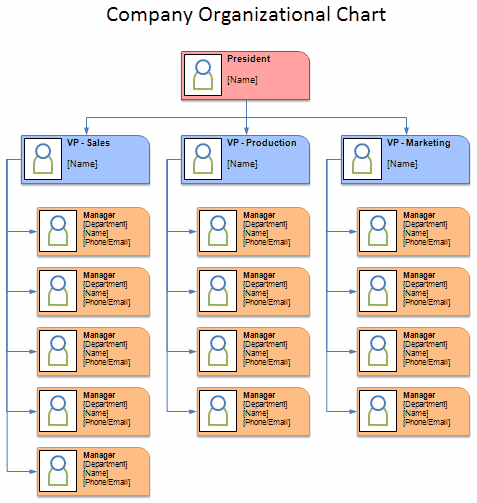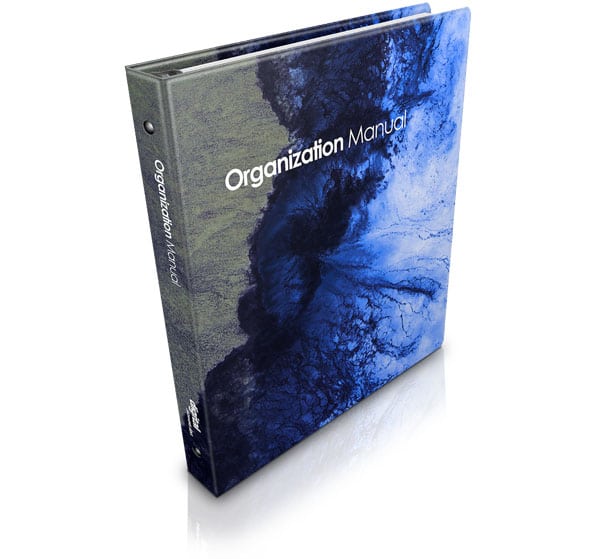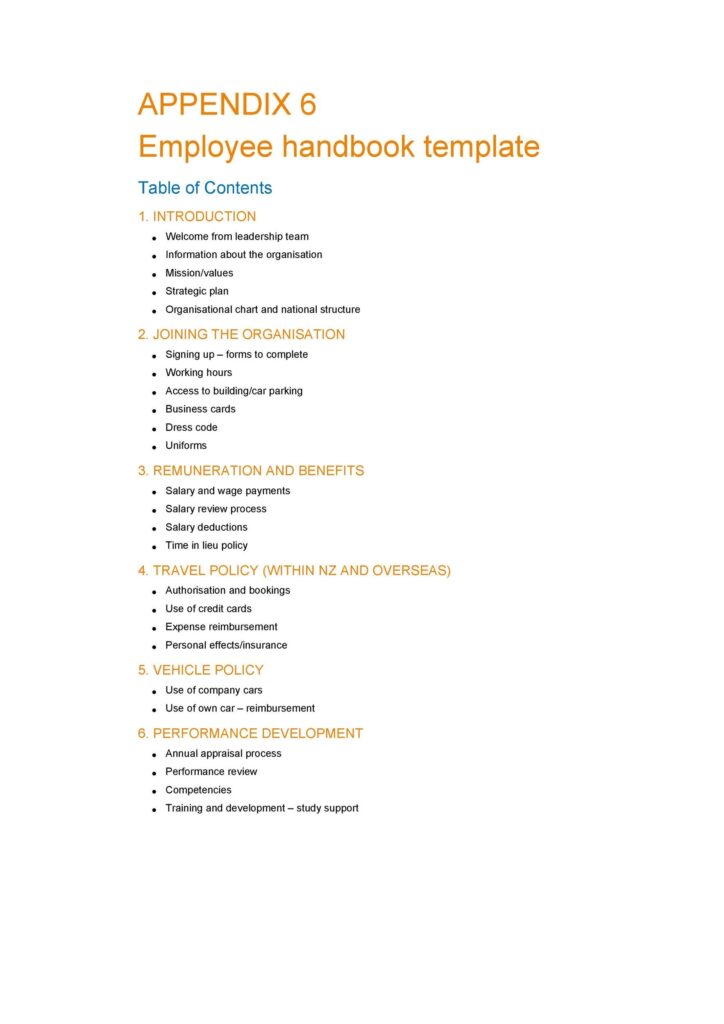ORGANIZATIONAL CHARTS

Organizational charts and manuals are created to describe the structure of an organisation. These are used as management control tools. They provide comprehensive information on a company. The chart and guides help an executive figure out where he fits within the organization’s hierarchy. It demonstrates an executive’s power and accountability. He is aware of his superior, for whom he is accountable, as well as his subordinates, whom he must manage.
Meaning of Organization Chart
Organizational charts and manuals are visual representations of an organization’s connections and actions.
Definition of Organization Chart
“An organisation chart is a diagrammatic portrayal of the or structure of an organisation,” says J. Batty. The framework identifies”
“An organisation chart is a diagrammatical form that depicts the main components of an organisation, such as the primary functions and their respective relationships, the channels of supervision, and the relative authority of each employee who is in charge of each separate function,” says Terry.”
“An organisation chart depicts administrative position and relationships in a firm or a department unit,” writes Henry H. Albens.”
“An organisation chart is a sort of document reflecting the formal organisational connection that executives seek,” says Mc Farland.”
According to Louis A. Allen, “The organisation chart is a visual representation of organisational data. Snap-shut organisation charts simply display the official organisation and reflect it for a specific time period.”
Check here for latest case studies and research book : https://kit.co/Anurooba/case-analysis-text-books
Contents of a Organization Chart
- The basic organisational structure and authority flow.
- Responsibilities and authority of different executives
- The interaction between the cops on the front lines and the officers on the staff.
- The names of the organization’s components.
- The numerous office personnel’s positions.
- The number of people employed by a company.
- Organizational structure, both current and prospective.
- Promotional methods
- The demands of management advancement.
- Information about your salary.
When developing the organisation chart, extreme caution should be used. All important details should be included in the organisation chart, but extraneous details should be avoided. A good organisation chart should include accuracy, clarity, and simplicity as some of its core traits.

Types of Organization Charts
- Vertical Chart: The command lines run vertically from the top level to the lowest level. This vertical graph is a vertical chart. Many businesses use this style of organisational chart.
- Horizontal chart: The differences between vertical and horizontal charts are minor. A horizontal chart refers to a chart in which the command lines run horizontally. The supervisor is on the left side of the chart, while the subordinate is on the right side. In no organisation, this style of chart is often used.
- Concentric chart: This chart is also known as a circular chart. The top executive’s position is shown in the chart’s centre. The chief executive’s subordinates are shown in all directions outward from the centre. It deduces the status of several levels of subordinates and clearly illustrates each individual’s duty. It is the most accurate picture of the relationships that exist among workers in a company hierarchy.
- Organization charts are separated into two types; master and supplemental charts: Master and Supplementary charts, for example. The Master chart is a diagram that depicts the complete organisation. It provides a clear image of the organisation and its primary parts or divisions. Supplementary chart or Unit chart is a chart that depicts a specific portion or division of an organisation. It depicts the specifics of the connection, power, and responsibilities within the given region.
Chart Revision
The term “chart revision” refers to keeping the chart current with the organization’s structure. Whenever changes occur in the organisation, the chart should be updated; otherwise, the chart will become outdated. It is important to remember that the chart must accurately depict the organisational structure. Management might delegate responsibility for keeping the charts up to date to an individual. He is in charge of updating and maintaining the organisational charts.
Principles of Organizational Chart
- Top executives observing lines of authority: When interacting with subordinates, top management should observe lines of authority. The lines of power should never be crossed by senior executives. The executives will not be required to hold their employees accountable for their job if they are bypassed. As a result, executives should follow the lines of power while issuing instructions or obtaining information.
- Subordinates observing lines of authority: When interacting with superiors, subordinates should be aware of the lines of authority. Whatever information the subordinates want, they should get it by following the lines of power. If there is a failure in this area, the subordinates’ loyalty will be questioned, and there will be a lack of coordination among the subordinates.
- Defining lines of authority: Each individual’s role within an organisation should be clearly specified. The personnel should be guaranteed that no overlapping will occur, and that no two people will be assigned to the same post if their authority and duties vary.
- A person should not be forced to work for two masters for the same job.
- Avoid a single site of job concentration: All work, or the majority of labour, should not be focused on a single location. Work should be separated based on each worker’s roles and responsibilities, as well as their administrative relationships with others.
- Organization charts should take precedence over personalities: A person should not be awarded a job only because he is the son or cousin of one of the organization’s top executives. Individuals should be given greater importance.
- Basic and adaptable: The organisational chart should be simple and adaptable to the needs of the average person. The size and nature of the organisation may evolve throughout time. As a result, frequent changes to the organisational hierarchy may be required. The current organisational chart should then allow for these changes.
Benefits / Advantages of Organsiational Charts
- They provide a clear image of the organisation in a straightforward manner.
- They provide a quick overview of the degrees of power and relationships that exist among personnel.
- When creating an organisational chart, dual reporting connections and overlapping jobs become apparent.
- Work instruction is simplified.
- Newly recruited employees are aware of their function in the company and act appropriately.
- A flow chart is a good place to start when considering organisational changes.
- Organization charts are used to analyse an organization’s strengths and flaws.
- Organization charts serve as reliable information sources.
- A person who creates an organisation chart has a full understanding of the organisation and can provide the finest image of it.
- The organisation chart’s lines of power and responsibility are clear and official.
- The organisation chart will help you understand the promotion lines.
- The management’s major role is planning. Planning is aided by organisation charts.
- Organization charts facilitate internal and external communication.
- The organisation charts detail the proper ways for monitoring and balancing the organisation.
- The extent to which each employee contributed to the organization’s success may be determined. This identification is based on the organisation charts.
- While drawing the organisation chart, look for hurdles to the management’s effective operation.
- Outsiders to the organisation can quickly grasp the functions of each department in an organisation chart.
- Organizational conflicts may be resolved with the aid of management.
Limitations / Diadvantages of Organisational Charts
- The majority of organisational charts resemble snapshots captured in a flash.
- The organisation charts exacerbate the rigidity of the relationships that exist among the company’s personnel. date.
- Keeping and ensuring the organization’s integrity is quite challenging. The company’s workers are adamant about not putting up with the organisational changes.
- The organisational charts fail to depict the informal relationships that exist among the organization’s employees.
- If the charts aren’t properly constructed, they might lead to erroneous conclusions.
- In an organisation chart, there is no distinction between line officers and staff officers.
- The organisational charts create a psychological complex in the minds of workers, such as superiors, inferiors, and so on.
- Following the too simplistic organisational structure might lead to the formation of a misleading image.
- The organisational chart shows a connection that does not exist among the workers.
- Varied people have different interpretations of the terms and lines used in organisational charts.
Organizational Manuals

A document created in an organization to provide information about a specific organization is known as an organization handbook. This guidebook includes a short history of the organisation. It’s frequently printed as a little pamphlet. Anyone with a basic understanding of the organization’s details or information may readily get access to it. This sort of organization manual is often created with the goal of developing a strategic plan for the company and offering direction on how to manage the company’s growth.
Meaning of Organisational Manual
An organisation handbook is a short book that provides information on the organization’s structure, roles and responsibilities of each position, job descriptions, salary, and existing relationships among members, as well as organisational processes and techniques.

Contents of Organizational Manual
- The organization’s full name and address.
- The organization’s phone number.
- The location of the branch office
- If applicable, the showroom’s address.
- The names and addresses of the senior executives.
- If there are any showrooms, their addresses should be included.
- A short description of the organization’s structure.
- The organization’s most important divisions or departments.
- Executives’ duties and responsibilities
- Information on the command’s unity.
- Policies and procedures governing leave, promotion, and transfer, among other things.
- Accounting, costing, and other accounting procedures
- A timeline of the management’s major choices.
- Forms for collecting specimens at the office.
- Organizational charts of a company.
Benefits / Advantages of Organisational Manual
In various ways, a well-prepared organizational handbook serves the organization the most. The following are some of the benefits:
- The organization’s personnel can receive a clear image of the organization.
- Employees obey the blueprint rules and regulations, reducing the amount of regulating work.
- The management’s choices are presented in a detailed way. It makes the organization’s operations run more smoothly.
- The standard processes and procedures to be followed in an organisation are included in the organisation’s manual. The organization’s objectives are then readily met.
- The organization’s employees are chosen, positioned, promoted, and developed only on the basis of the information contained in the organization’s handbook.
- An organization handbook assists new employees in quickly learning their jobs, responsibilities, and interpersonal interactions.
- An organization’s senior leaders may make rapid choices by consulting the guidebook.
- There are no spoken instructions in the organization handbook. With the aid of the organization handbook, the drawbacks of oral instructions are avoided.
- The use of an organizational handbook helps to prevent organizational disputes.
- The organization manual may be used to modify the structure of the organization in the future. If the necessity arises, these adjustments may be made.
- It improves the organization’s goodwill and compassion for outsiders.
Limitations / Disadvantages of Organisational Manual
There are certain drawbacks to using an organization handbook. Here’s a quick rundown of what they’re all about:
- The organization guidebook will quickly become obsolete. It’s because of the business’s constant adjustments, as well as employee behavior and other factors.
- Human interactions are established and stated in the organization handbook, but they cannot be followed in practice in a company.
- Organizational manuals are not reviewed on a regular basis. As a result, the essential modifications aren’t reflected in the organization’s handbook.
- Creating an organisational handbook raises the organization’s administrative costs.
- Keeping the organisation handbook up to date takes a lot of effort.
- The processes outlined in the organization’s handbook should be followed by all personnel. It lowers the organization’s individual initiative.
0 Comments
8 Pingbacks